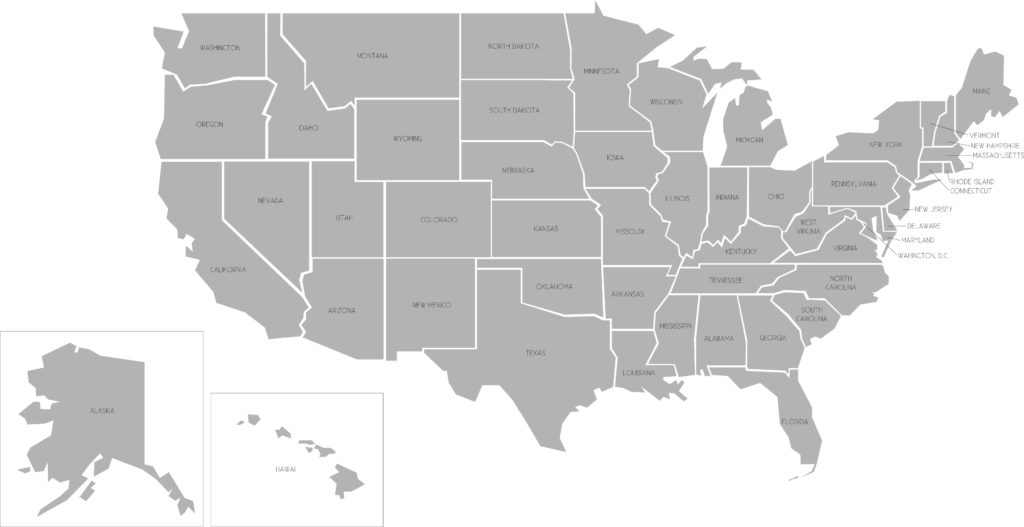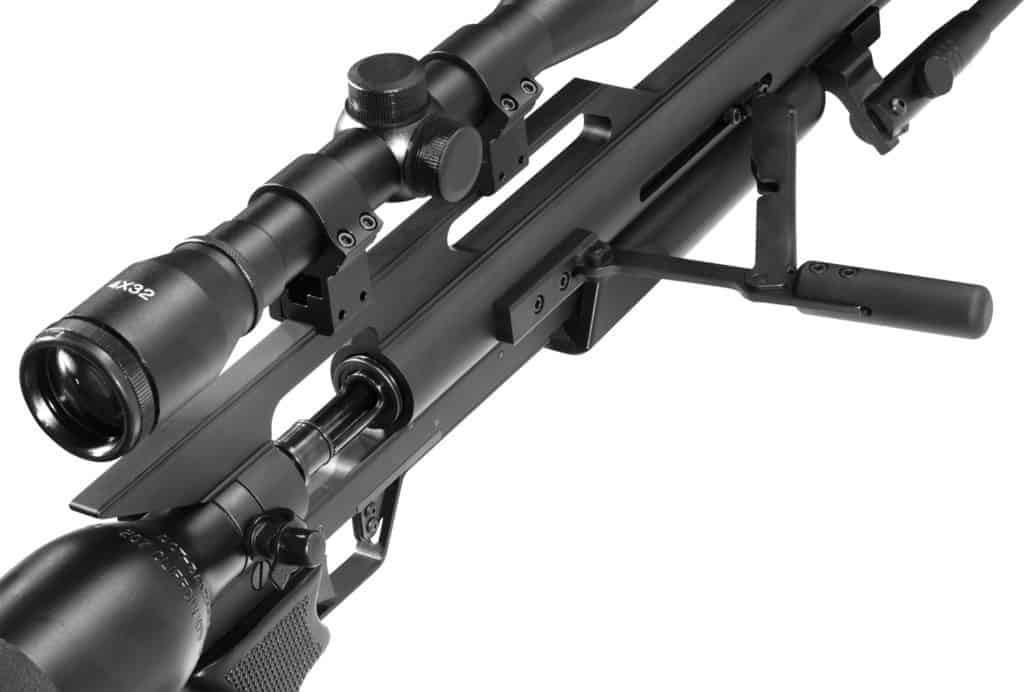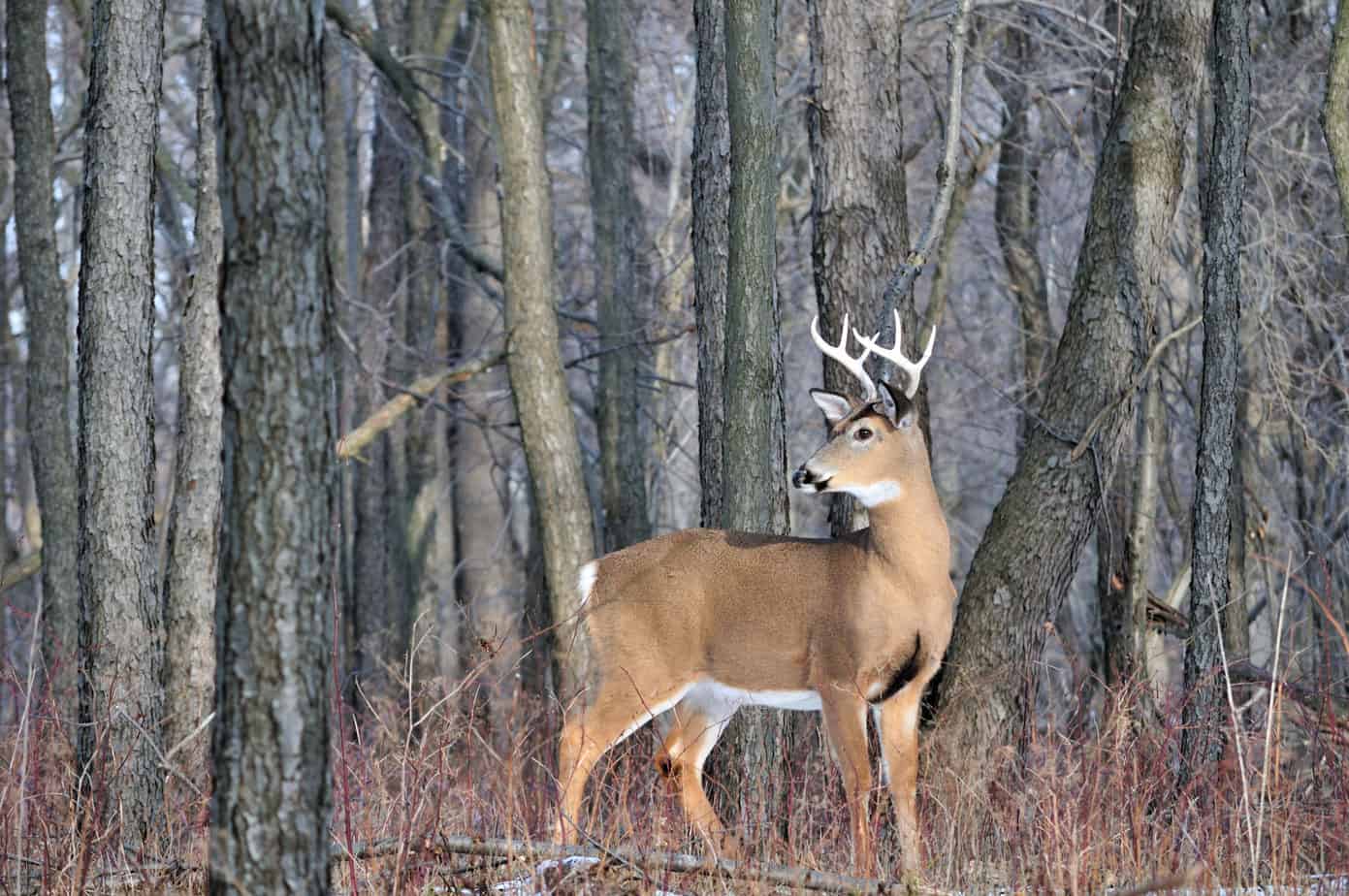Air rifles have been gaining popularity steadily over the past several years. This is the result of several factors, such as a shortage of .22LR, an enormous influx of new shooters both young and old, and airguns that have become largely viable for hunting beyond the usual critters and varmints.
Considering all this, it looks like pneumatic hunting is here to stay.
To answer the question regarding hunting deer…YES, you can hunt deer with an air rifle. More and more states have been recognizing advances in technology and have made deer hunting with an air rifle legal. Get the right gear, follow the law, and have a good time.
Now, before investing in any equipment and heading out to fill the freezer, the first thing to do is know where and what you can legally hunt once you have your air rifle.
Of course, there are no federal regulations in place on air rifle hunting, but the same cannot be said about state laws. Not only do laws vary from state to state, but each state can set its own laws and codes on what can be hunted with an air rifle and what cannot.
There are even guidelines on what caliber, speed, and muzzle energy required to be legal in states that do allow air rifle hunting.
In this article, we will break down some of the state laws that pertain to air rifle deer hunting, and what types of equipment are suitable to ethically kill a deer.
State Laws

While it would be excessive to list all the laws for all the states regarding air rifle deer hunting, we will give a quick rundown of states where air rifle hunting has become popular and is legal with some stipulations. As well as some of the states where it is not permitted at all.
It seems to be much more prevalent to be legal to hunt deer in states in the eastern half of the nation, with some exceptions, while the majority of the states west of the Mississippi have prohibited it.
On the east side of the country, Missouri, Arkansas, and Michigan are all legal. So are Kentucky, Tennessee, and all states southeast of them are alright, while nearly all states in the northeast are states that have prohibited the practice, with the exception of Maryland, Vermont, and Maine.
Once you cross ole Miss, the only states where it is legal to hunt deer with air rifles are Idaho, Utah, Arizona, North Dakota, and the great state of Texas.
Texas Laws
Without going into detail on every state’s specific regulations, we will use Texas as our example. The regulations set forth by the Texas Parks and Wildlife Department are pretty straightforward and reasonably fair. They state that on permitted public lands, you can hunt deer with an air rifle as long as it meets the following conditions:
- The projectile must be at least 30 caliber in diameter
- The projectile must be at least 150 grains in weight
- The projectile velocity must be a minimum of 800 feet per second
- OR any combination of bullet weight and muzzle velocity that produces a muzzle energy of at least 215 foot-pounds of energy.
What air gun should I use?
Conveniently these requirements can be met by nearly any air rifle in the Texan line from Airforce Air Guns. The superstar of this line being the Texan .50 Caliber.

This professional-grade air rifle can put a projectile downrange at over 1000 feet per second, with muzzle energy levels that top 650 foot-pounds. This is more than adequate for a humane kill shot in nearly any scenario and at amazing distances.
Why Are The Regulations So Specific, And Why Are They Important?
Air guns function much differently than traditional firearms like shotguns and centerfire rifles. As such, an understanding of the operation and subsequent limitations of pneumatic rifles.
Before you commit to an air rifle, you should do your best to ensure that it meets the state requirements for where you will be hunting. The caliber, speed, and energy levels should all be easily found either through the manufacturer’s website, or the rifle documentation.
Just like with any other legal hunting method, knowing how your weapon exceeds, and how it is limited, is absolutely crucial to reducing or eliminating loss due to wounding and escape.
Different brands will have different specifications for ballistic performance. Other critical factors to consider when hunting with an air rifle are the weight of the bullet, the skill of the hunter, and the distance to the target.
Another limiting factor that is unique to air rifles is the diminishing charge in the air reservoir. After each shot, the amount of air in the reservoir is reduced, thus making each successive shot have its own diminished ballistics.
Eventually, this will necessitate either recharging or refilling the reservoir or air source.
While it is absolutely possible to take big game at distances of 150 yards or more, the ideal effective distance for air rifles is 75 yards or less. After this point, there is a marked reduction in the lethality of the shots from air rifles.
This is vital knowledge for all hunters using air guns because this limitation can lead to wounding loss. Inside this range, shots placed into essential or vital organs, like the brain, heart, or lungs, is still critical to reducing wounding loss.
This is similar to the limitations and shot placement requirements of using other non-explosive weaponry like archery.
The standard practice of waiting approximately an hour for the animal to expire without fleeing should still be observed since the initial ballistic energy is enough to damage the organ fatally but may not prevent adrenaline-fueled attempts to escape if frightened.
Other Important Considerations When Choosing An Air Rifle

Classification
Your state may classify air rifles differently than on a federal level. Federally, air rifles are not considered firearms, but that being said, some states do.
New Jersey for example does classify air rifles as a firearm, and as such, they are bound and regulated by that state’s firearm laws. This extends from purchase and handling through usage during hunting.
Even if a state does not classify an air rifle as a firearm, they may still qualify for the label of “dangerous weapon” which means that felons cannot own them. Other states do not classify them as either firearms or dangerous weapons.
Licensing
Occasionally a state will require licensing for specific weapons when used for hunting. This often delineates between archers, black power weapons like muskets and other muzzleloaders, and traditional firearms. Before you hit the stands, make sure you have appropriate licensing if required in your area.
Caliber
This is one of the main factors to consider for hunters because the goal of every hunter should be to put the animal down and quickly and humanely as possible and reduce or eliminate the subsequent suffering.
As a general guideline, animals with fur should be shot with nothing smaller than a .22 caliber bullet. This is also dependant on species because obviously a .22 is too small to be effective and humane on deer.
The ideal caliber for deer will be an absolute minimum.30 caliber, with .40 being the standard, and the required minimum in states like Missouri.
As we mentioned with Texas, they have a minimum caliber requirement, but the bullet weight and speed can be variable, provided the muzzle energy is appropriate for an ethical kill by being a minimum of 215 foot-pounds.
Velocity
Velocity is important as it figures heavily into the muzzle energy calculation. Even a large caliber bullet can be useless as a humane killing option if it is not traveling fast enough to be effective.
Not only Texas, but Rhode Island and New Jersey have minimum velocity requirements for hunting projectiles.
Seasonal & Animal Restrictions
In most areas, hunting weapons each have their own seasonal restrictions, as well as guidelines on what they can be used during a given season. While it may be legal to use an air rifle for deer during one part of the year, it may be illegal to use it on coyotes during that same time of year.
It is best to check with the wildlife department for the state in which you will be hunting, for the specifics.
Age Limitations And Restrictions
The restrictions on buying and using air guns based on age will vary considerably from state to state. Some states have no restrictions, while some require the buyer to be 16, or even 18, for long guns.
Conclusion
As with anything, do your homework before jumping into something with legal ramifications. With that being said, “airguns” have come a long way and they shouldn’t be looked at as kid’s play anymore. If you spend a little money and buy the right gun, hunting is definitely possible with the capable rifles.

